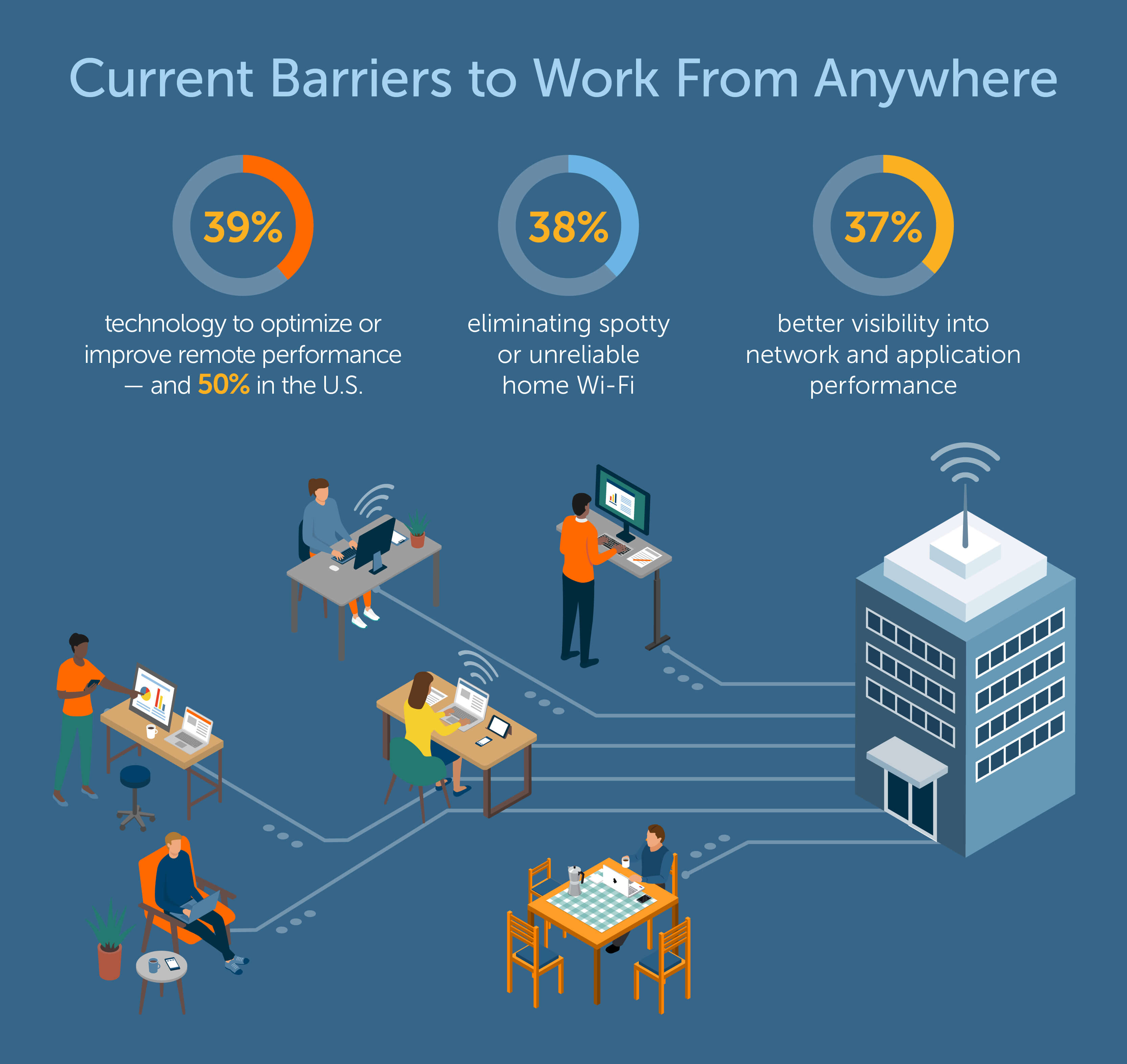As the “new normal” becomes just normal, companies are preparing for a large-scale, long-term shift to remote work, where increasingly employees will ‘work from anywhere.’
Although we all wish the impetus for widespread remote working was different, the new way of working—one that’s distributed, technology-enabled, and aligned with meaningful digital transformation goals—should have long-term positive effects for business and people. Today, we’re releasing the Riverbed Future of Work Global Survey 2020 and the results paint a clear picture of where companies are, and where they intend to go.
The abrupt shift to remote work caused some major initial challenges
It’s no surprise to anyone that at the very beginning of the pandemic, many companies were caught flat-footed. Although 95 percent of leaders were comfortable with the idea of remote work, 69 percent said they were not completely prepared for such a jarring transition. That sudden shift produced some substantial problems.
For instance, 40 percent flagged increased technical difficulties as a major disruptor while 37 percent cited weaker employee performance and productivity. Another 36 percent indicated stress and anxiety were big issues for employees. These are all predictable outcomes for a pandemic that upended both personal and professional norms. Fortunately, all these issues are surmountable with the right technology.
Business leaders have a better sense of performance barriers
The sudden shift to remote work gave business leaders a better sense of the biggest barriers to success for ensuring the performance of a remote workforce. According to the 700 global respondents, the biggest barriers are: technology to optimize or improve remote performance (39% globally, 50% in the U.S.), spotty or unreliable home Wi-Fi (38%), and the need for better visibility into network and application performance (37%).

The office of the future will be different
Forward-thinking organizations are investing for performance in this remote work reality. Of those surveyed, 61 percent of leaders will be making additional technology investments in the next 12 months, with 31 percent describing this expansion as significant. Anecdotally, we’ve heard this same theme from our customers, who are deeply interested in taking a more proactive posture.
There’s no question that hybrid work environments are on the roadmap for many businesses across a wide variety of industries. In fact, the survey found that on average globally, businesses expect 25 percent of employees will work remotely after COVID-19, nearly a 50 percent increase versus prior to the pandemic. Employees will increasingly “work from anywhere” (#WFA)—and technology will be the enabler that breaks down barriers to performance and security.
Conclusion
Tools that maximize the performance and reliability of apps and remote workers or that drive enhanced network visibility regardless of location will be absolutely fundamental to high-functioning organizations in this new paradigm. This is an area Riverbed is very focused on with our customers—with solutions such as Client Accelerator, SaaS Accelerator, and unified Network Performance Management.
See what else business leaders globally had to say about the future of work and what they’re doing to help their people navigate this new working normal here. Learn more about our remote workforce productivity solutions and join us in the conversation around the #FutureofWork #WFA #remotework.
